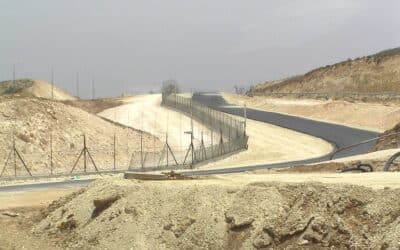The risk of nuclear annihilation is at its highest point in history, according to the Bulletin of Atomic Scientists (BAS). The group said the war in Ukraine was the largest factor in its assessment that a civilization-ending event is now closer than ever before.
The US-based group uses a ‘Doomsday Clock’ with midnight signifying the end of humanity. On Tuesday, it placed the time at 23:58:30 – or just 90 seconds to midnight, the closest it has ever been since the BAS’ inception in the 1940s.
During the Cuban Missile Crisis of 1962 – among the most dangerous episodes of Cold War brinkmanship – two minutes remained on the clock.
The BAS said its new assessment was “largely but not exclusively” based on the war in Ukraine and the increased risk of nuclear escalation between Western powers and Russia, though it also cited the “climate crisis,” “bio-threats” and “disinformation.”
“We are living in a time of unprecedented danger, and the Doomsday Clock time reflects that reality. 90 seconds to midnight is the closest the clock has ever been set to midnight, and it’s a decision our experts do not take lightly,” BAS president and CEO Rachel Bronson said in a statement. “The US government, its NATO allies and Ukraine have a multitude of channels for dialogue; we urge leaders to explore all of them to their fullest ability to turn back the clock.”
Even if the conflict in Ukraine does not go nuclear, the risk of an atomic exchange elsewhere will remain high going forward. The Russo-Ukrainian war “has challenged the nuclear order – the system of agreements and understandings that have been constructed over six decades to limit the dangers of nuclear weapons,” said Steve Fetter, professor of public policy at the University of Maryland and a member of the BAS’ Science and Security Board.
Since Russia invaded Ukraine last year, the West has gradually stepped up intervention on behalf of Kiev. The Kremlin sees Ukraine as a core security concern and had long made clear that its membership in NATO was a major red line. Nonetheless, the US-led military bloc has continued to assert that its doors are open to Ukraine and other countries neighboring Russia – reiterating that pledge again last November – and several top Ukrainian officials have said Kiev is now a “de facto” member.
Though President Joe Biden previously warned of a third world war and nuclear “Armageddon” in the event of a direct confrontation with Moscow, such concerns appear to have waned in Washington. In December, an unnamed Pentagon official told a British newspaper that the US had given “tacit endorsement of Ukraine’s long-range attacks on targets inside Russia,” saying “the fear of escalation has changed since the beginning.”
The United States has also provided increasingly heavy weapons to Kiev, including some systems it previously refused to send. With the total price tag approaching $30 billion, the long list of advanced arms includes a Patriot missile defense battery, dozens of HIMARS multi-launch rocket platforms and National Advanced Surface to Air Missile Systems (NASAMS), among other gear. Moreover, Washington is reportedly preparing to authorize the shipment of M1 Abrams main battle tanks to Ukraine after repeatedly declining Kiev’s request for the weapon, a move that could risk major escalation.
The Biden administration appears ready to test its theory about the Kremlin’s unwillingness to escalate. Last week, several unnamed officials told the New York Times that the Pentagon is now considering ways to assist Ukrainian strikes deep inside Russian-held territory, hoping the influx of new Western arms would support a major counter-offensive in Crimea, which has been under Moscow’s rule since 2014.















